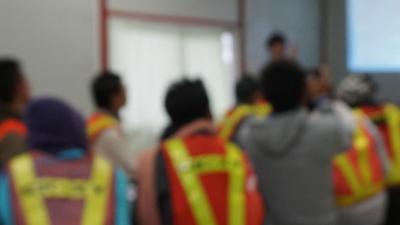
Supporting global communities in making sense of risk
A blog from Padmini Ravi, Project Manager – Risk Know-How, Sense about Science.
This page is approximately a 3 minute read
This page was published on

Safety professionals and scientists choose from a suite of different safety approaches and techniques. Although not always explicitly stated, all these are based on different 'safety models' that describe the elements of a system and how they are organised and interact.
Some models are formalised through publications, but others remain implicit and reflect our knowledge and experience and exposure to published safety models. All those formal and tacit models guide our thinking and define how we'll approach a safety-related situation, challenge or event.
A 2016 catalogue showed numerous safety models in academic and industry literature.1 Still, more models emerge. Each model advocates a somewhat different approach to safety management and investigations. It represents a mixture of various social, engineering and management perspectives.
At the same time, the plurality of safety models denotes the use of different safety languages across industry and academia that could deprive us of a shared understanding of safety. Is this desirable in the face of our collective efforts to increase safety initiatives' effectiveness within and across organisations?
Studies comparing various models reveal that each model offers a different focus and cannot capture all system features, parameters and interactions.2 This raises concerns about the validity of individual models, especially within the reality of modern systems with multiple interactions between several human, technology, organisational and environmental layers and elements.
Indeed, some degree of customisation to the needs of specific industry sectors and various contexts is necessary, but this does not mean we should work in silos. We could build and periodically update a common and accepted approach to safety. This could then be tailored to each field through relevant classifications and taxonomies (e.g., types of hazards and failures).
In 2019, we merged the strengths of four widely used and studied models, and we suggested the concept version of a hybrid safety model.3 That was just the first step that needs further work. Nonetheless, it indicates that coordinated and genuine efforts with academia and industry's cooperation could lead to a shared safety language.
It's time to develop a hybrid, customisable model based on integrating existing ones rather than creating new ones.4 This becomes even more important in our era of workforce mobility between regions, organisations, and job roles.
Let's revisit what we know, reconcile diverse perspectives and integrate approaches towards developing an inclusive and holistic view of safety reflected in a commonly accepted and continuously evolving safety model.
Disclaimer: all blogs featured are the views of the author and not representative of Lloyd's Register Foundation.
Everdij & Blom, 2016: https://www.nlr.nl/downloads/safety-methods-database.pdf
Underwood & Waterson, 2014: https://www.sciencedirect.com/science/article/pii/S0001457513002959
Filho et al., 2019: https://www.sciencedirect.com/science/article/pii/S0925753518311858
Igene & Johnson, 2019: https://europepmc.org/article/med/31311399
Stanton, 2019: https://www.racfoundation.org/research/safety/models-and-methods-for-collision-analysis
Karanikas & Roelen, 2019: https://www.matec-conferences.org/articles/matecconf/abs/2019/22/matecconf_icsc_eswc2018_02001/matecconf_icsc_eswc2018_02001.html
Waterson et al., 2017: https://www.sciencedirect.com/science/article/pii/S0003687016302010